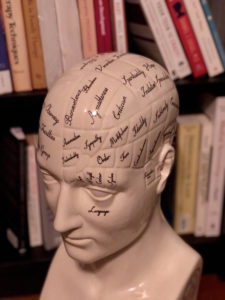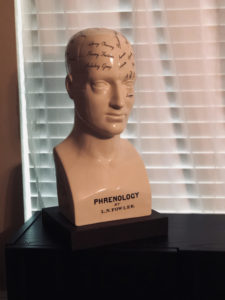
Phrenology
If you aren’t familiar with phrenology, it’s a frankly brilliant pseudoscience from the early 1800’s that we completely dismiss now. But, today, I want to talk about how it’s brilliant.
The basic premise was that different parts of the brain handled different tasks/ personality structures and therefore you could determine a person’s faculties or traits by examining the shape of their skull. Of course, we know that’s not true now – growth in a certain area of the brain doesn’t make it bigger, but rather more densely populated with neural connections and/or better myelinated. But WOW… why do we summarily dismiss the outrageous assertion that the brain is an organ with many parts that serve different functions?! That’s basically the birth of neuroscience right there!
The reason I feel so passionately about phrenology (and why I like to keep a phrenology bust in my office), is because is science is always valuable, never perfect, and continually growing. And that’s a message I really, really want all of my clients (and all of us therapists) to know! Not just about science, but in the larger sense of the message “not to let the perfect be the enemy of the good.”
Comment! What’s something in psychology that we don’t really give a lot of credibility to anymore that has still helped you?
